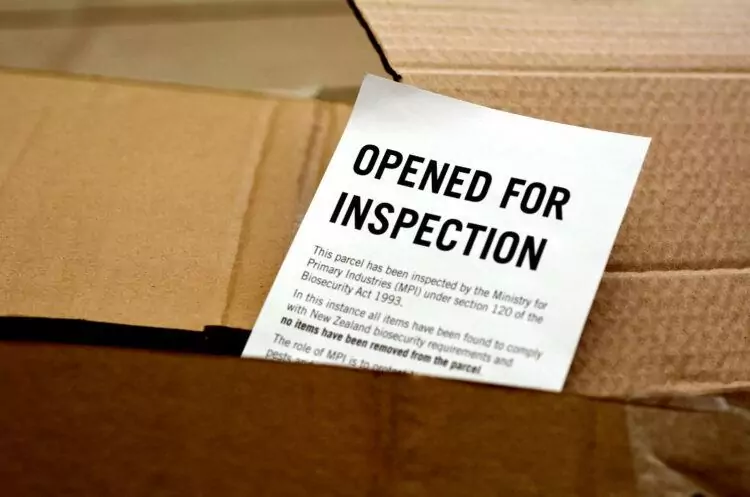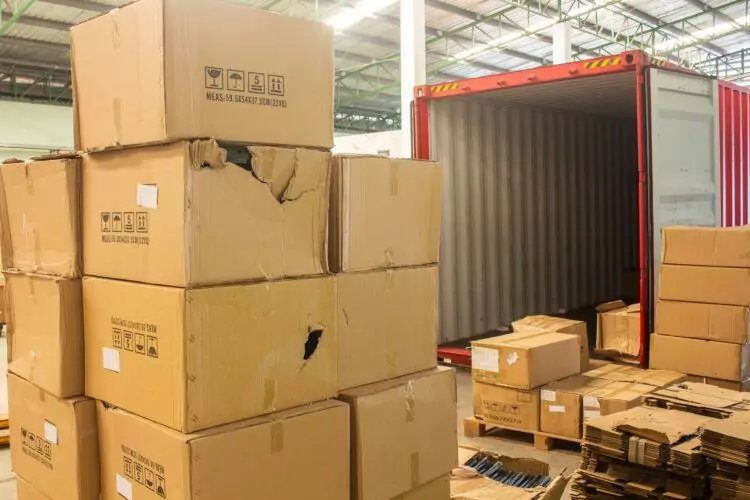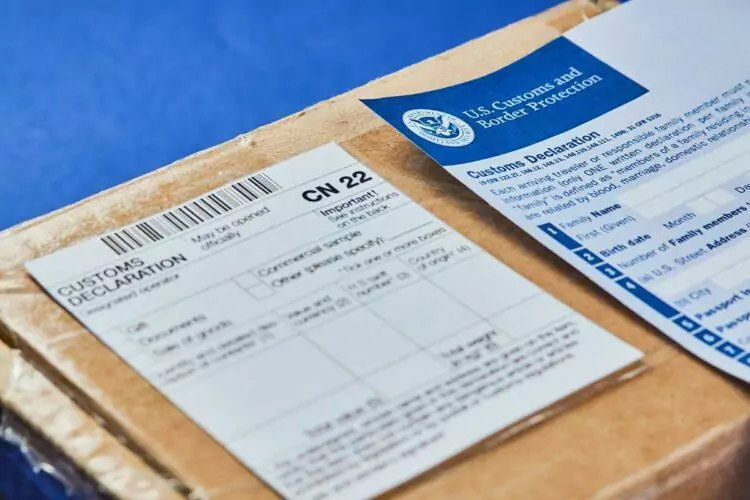Here’s what it means when your order tracking says “item presented to import customs”:
The message “item presented to import customs” is telling you that your item has arrived in your country, but it is being held up at customs.
This is a typical delay in the shipping process, and in most cases, customs will release the package to finish its delivery within a few days of you seeing this update.
So if you want to learn all about what it exactly means when your order tracking says “item presented to import customs”, then this article is for you.
Let’s get right into it!
- Processed Through Sort Facility: Meaning?
- United States Arrived the Local Courier Facility: Meaning?
- USPS Postage Due: Meaning?
- DHL Says Customs Status Updated: Meaning?
- Forever 21 Packages Coming Early: Possible?
- Shein Delivers Early: Shein’s Tracking Accurate?

What Does the Phrase “Item Presented to Import Customs” Mean?

Let’s get into the basics.
What is this message telling you?
Well, for starters, it’s informing you that the package is in your country.
There’s no reason to include this message when a package is passing through a third country on its way to a final destination.
So, you know that a significant portion of the item’s journey is complete, as it’s now in the same country as you.
This message is also letting you know that progress might hold up for a bit, and there’s nothing the carrier can do about it.
Customs will take as long as they take for any given item (in the U.S., they have up to 45 days to inspect a single package).
Ultimately, this message is providing you with an update.
Progress has been made in the total shipping process, but there is no perfect estimate as to how long it will take until customs is done with their part in the whole thing.
What Happens When an Item Is Presented to Import Customs?

While that may be the gist of what the message means, there’s a lot more to understand and unpack in this situation.
Why is the message so specific?
What does it really mean when an item is presented to import customs?
In short, that means that the item is going through a formal inspection process.
In more detail, there’s a whole operation that takes place within customs, so I’m going to break down the important parts of the process for you now.
#1 Paperwork Is Checked

Inspection is the primary thing that happens after the item is presented to customs.
You typically will not get an extra update when an item graduates from presentation to inspection.
Just know that inspection is the real point of the presentation.
When customs inspects your package, they don’t necessarily open it up.
For the most part, they check the paperwork to make sure everything is in order.
They will only open a package for deeper inspection if they have reason to believe that something is wrong.
#2 Item Is Inspected

What happens after the item inspection depends entirely on what customs sees when they go through the item and the shipping manifest.
If the item checks out, it will be released, and shipping will continue.
If something is wrong, the item is typically sequestered.
So, what situations lead to the latter scenario?
Why might an item not be legally able to continue its journey?
There are a few common explanations, and the first is fairly innocuous.
If there is a problem with shipping labels or manifests, then items are often held until the problem is resolved.
In plenty of cases, it’s a simple mistake, but many customs regulations will require an item to be held at the facility until these issues are resolved.
Improperly labeled imports cannot legally be released into the nation’s interior, in many circumstances.
Things can escalate and be more serious.
It’s possible that the labeling is correct and the real issue has to do with import regulations.
It could be that the country of origin is the issue.
Embargoes and other regulations can make it so that certain goods are not allowed to be shipped to specific countries.
As an example, the United States banned all beef imports from the UK for about 20 years.
For anyone who remembers, this was linked to the issue called Mad Cow Disease.
Skipping a whole other conversation, the United States determined that all beef was unsafe for import, so there was a complete ban on these products.
Here’s where things can get tricky.
Some items would have been banned for coming into contact or proximity with UK beef or beef processing facilities, and those items might have been banned for import as well.
The whole point here is that trade rules can be pretty complicated.
And, of course, there’s also the possibility that the item itself is just plain banned.
In that case, it doesn’t matter where the shipping began; the item is considered contraband and cannot be imported.
In the cases of contraband, things are often a bit more serious.
Embargos and complicated specific bans can lead to mistakes where things aren’t shipped right.
In those cases, your item might get held up at customs, but it doesn’t mean you are in trouble.
If you tried to order a box of steaks from England during the beef ban, it doesn’t mean you were committing a felony inside of the US.
But with contraband, it is possible that ordering the banned items is a crime, and that can lead to more serious consequences.
So, it could be the case that seeing that your item was presented to import customs is the first step that precedes legal problems.
This isn’t to suggest that you should fear ordering international goods.
It’s to point out that there are a lot of possibilities, and the worst-case scenarios are unpleasant.
#3 Item Is Released

Ok. I just took you through a lot of material.
Let’s get this back on track.
You got a message that your item was presented to import customs.
You know that customs will review the shipment, and that can go a lot of ways.
More often than not, customs will review your item, see that it’s fine, and release it to continue its journey.
Especially since you’re using a major shipping company, there’s a strong incentive to ensure that everything is legal and above board before the item ever actually begins its journey.
It’s hard to accidentally order something or ship something that will be detained by customs.
In most cases, if you’re taking a risk with customs, you knew that before the item left its country of origin.
So, the major carriers have a vested interest in preventing any illegal shipments, and because of that, you will usually see your item released after it is presented to customs.
The only real issue here is that you don’t know how long it will take.
Customs doesn’t commit to hard timelines, so it could be anywhere from a few hours to many days while you wait for the shipping status to move past the “presented to import customs” message.
#4 Item Is Sequestered

But, just because one scenario is more likely doesn’t mean it’s the only way this can all go.
As I already explained, there are legitimate reasons for customs to hold onto your item, and those range in severity.
If there is a simple problem with labeling or paperwork, then typically, customs will involve the shipping company and report the issue.
The shipping company can then take measures to correct the problem.
Once they do, the item will be released and continue on its journey.
For more severe instances, customs will not plan to ever release your item.
For whatever reason, it is in a violation strong enough that they’re confiscating the item.
This has potential consequences.
If it’s something akin to banned beef, you probably won’t face any direct prosecution from customs.
But, you won’t ever get your banned item either.
So, you’re stuck in an unfortunate problem, but it could be worse.
If you’re importing highly sensitive contraband, like biological weapons, then customs might want to prosecute you for trying to import something like that.
This is where things get a little strange.
Customs is not required to say how or why they have detained an item.
They can simply act according to their own discretion.
On top of that, the shipping company doesn’t have to explain to you what is happening.
In extreme cases, customs might even request that they not tell you what is happening, so as to avoid tipping you off that there is legal trouble.
The one interesting exception to all of this is the USPS.
Because it is run by the government, the postal service actually is required to tell customers when an item is detained and why (assuming they receive such information from customs).
Long story short, if your item is held by customs, things could range from a simple problem with an easy fix to life-altering legal ramifications.
Why Do Shipping Companies Use the Phrase “Item Presented to Import Customs”?

All of this leads to an important question.
Why is this particular messaging used?
Telling you that your item was presented to import customs doesn’t really give you a lot of useful information, so what’s the point?
For the most part, this boils down to customer satisfaction, managing expectations, and culpability.
Customs is a place where packages can be delayed considerably, and most major carriers want to make it clear when, where, and why delays are occurring—especially when those delays are outside of their control.
So, the carrier is using this message to show you that progress has been made, but things might not move forward for a bit.
More importantly, they’re showing you that the delay isn’t their fault.

